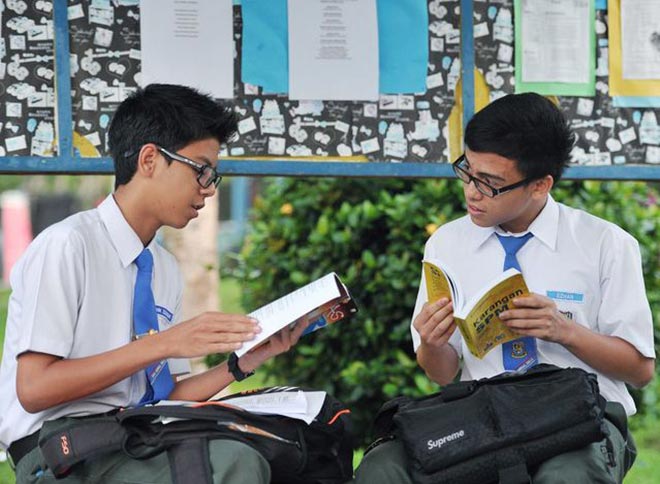
Photo shows students studying for an exam. Pearson Malaysia has a number of Pearson BTEC-approved centres designed to give students the skills they need to either move on to higher education or go straight into employment. — Bernama photo
KUCHING: Pearson Malaysia Sdn Bhd (Pearson Malaysia) believes there is a lot of potential for the applied learning sector in Sarawak.
In an exclusive interview with The Borneo Post, Siva Prakash, senior manager of qualifications and corporate sales for Pearson Malaysia, revealed that the group is glad that Sarawak is taking this sector seriously and that it is moving forward to address the current gaps in the state.
At the moment, Pearson Malaysia is working with International College of Advanced Technology (i-CATS), one of the teaching arms of Pusat Pembangunan Kemahiran Sarawak (PPKS).
“We are looking at expanding the relationship and also with the relationship that we have at the state level, through the ambassador of UK, we are trying to reach a greater working relationship,” Siva said.
In Sarawak specifically, Pearson Malaysia has a number of Pearson BTEC-approved centres, focused on engineering-related and oil and gas-related qualifications.
With more interest lately coming from a number of providers to introduce Pearson’s qualifications, Pearson Malaysia is looking at introducing hospitality, as it sees a great demand in hospitality as well, in addition to construction and engineering.
BTECs are vocational qualifications designed to give students the skills they need to either move on to higher education or go straight into employment. They give teachers the freedom to create a programme that they want to teach and that students will want to learn about.
“Obviously, Pearson BTEC qualifications are meant for the industry, it is developed by the industry. It fits very well as a value-added qualification for the existing market.
“Every qualification that Pearson BTEC has is recognised by academicians which provide progression into university.
“It is recognised by professional bodies, which eventually will allow them to get charterships and so on, and employers because all the qualifications and modules are prepared with Sector Skills Council, which is the industry-led bodies,” Siva said.
Over the years, Pearson qualifications have been managed by independent agencies. Quite recently, from 2014, Pearson Malaysia has understood the need to have direct contact with the centres, the partners, and as part of its strategy moving forward, to work in partnership.
“We are identifying quality centres, colleges, institutions to work with us. And so far, we have been receiving numerous enquiries, overwhelmed with prospects that are interested to run our qualifications,” he said.
Siva noted that this is also a reflection of the memorandum of understanding (MOU) that Pearson signed back in May 5 with the Ministry of Human Resources, specifically the Department of Skills Development (JPK), which allows the group to work with existing learning institutions which are offering the local certification to appoint BTEC as a quality auditor and subsequently empower the learners with additional certification from the UK.
“Our strategy for Malaysia, in Pearson terms we call it our global education strategy for Malaysia, is to grow with partners.
“When I say partners, we are not looking at a large number of partners, but quality partners,” Siva said, adding that they are focused on individual states and working very closely with the government related organisations or institutions.
“Like in Sarawak’s case, we are glad to hear that we have received good response from the state.
“As I said, we have been talking with PPKS and we are trying to reach out to all the government related stakeholders.”
